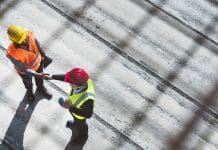Our path to net zero requires fundamental changes to our homes and how we use energy. Yet in our increasingly electric world, the critical importance of electrical safety is rarely fully acknowledged in strategies for our low carbon future. Here, Lesley Rudd, chief executive of Electrical Safety First, explains how the campaigning charity is aiming to change this
At the end of 2021, Electrical Safety First released a new report, Future Homes: Electrical Safety in the Net Zero Home. It considers some of the key technologies of the future home and recommendations to enhance electrical safety.
We took a holistic approach, with the report divided into a review of four primary areas – housing infrastructure, electric vehicles (EVs), product safety and growing the installer base. Addressing these interrelated elements now will help ensure the future home is not only low carbon and smart but also safer. Transitioning to net zero is critical but it cannot come at the cost of consumer safety.
It’s estimated that our homes produce 15% of our greenhouse gas (GHG) emissions and transport over 25%. Road transport – particularly cars – are the biggest contributor to this figure. So inevitably, homes and cars are at the forefront of our energy transition.
New build vs retrofit
The government’s target for achieving net zero GHG emissions is 2050, with all new homes required to be “futureproofed” with low carbon heating from 2025. Net zero homes will also be highly insulated and may incorporate on-site renewable electricity generation and various smart technologies, with some providing electric vehicle home-charging points.
So, electricity will play a key role in new builds. However, as the UK has the oldest housing in Europe, retrofitting existing homes is a bigger challenge. Currently, the UK has approximately 27m homes, with around 85% heated by gas and ministers have proposed ending gas boiler installations by 2035.
Heat pumps are a green alternative to gas boilers and the government’s Heat in Buildings Strategy identifies heat pumps as a scalable option for decarbonising heat, performing a substantial role in achieving net zero.
But whether new build or retrofit, the deployment of technologies not in common use in the UK introduces inherent safety risks, as consumers and installers are less familiar with them. We will be undertaking research, and subsequent awareness campaigns, to help raise awareness and provide advice.
To meet climate change targets, around 38m cars in UK must be replaced by ultra-low emission vehicles (ULEVs). If possible, people want an EV home charging point installed and we have found that a lack of accessible charging points creates risky behaviour. Our research found 74% of those who charged an EV via a household domestic socket blamed a lack of access to public charging points – a particular issue for flats and high-density housing.
One impact – and probable lasting legacy – of the pandemic is increased hybrid and home-based working. While many don’t require particularly sophisticated technology to do their jobs, extended working from home is likely to change that. Establishing a home office will encourage the mainstreaming of the smart home and whole-house integration of the internet of things. The safety of our homes is vitally important as we increasingly live and work there.
To achieve net zero requires appropriately qualified workers. Yet there is already a skills shortage, with an estimated additional 12,500–15,000 electricians required by 2024, to meet demand. So expanding the numbers of properly trained, certified firms and installers, in traditional and low carbon technologies now, will be essential in reaching net zero safely.
Our Future Homes report is a first step in our work to ensure an integrated approach to electrical safety in the home of the future. To gain feedback on the report, and inform further research and campaigns, we are hosting a series of roundtables on each of its key areas.
The first, on housing infrastructure, was held in October, with representatives from housing associations, consumer protection organisations, fire and rescue services, and relevant professional bodies attending. Discussions focused on our report’s recommendations for improving data gathering for effective policy planning and the need for interventions and safeguards, such as mandatory electrical checks and support for vulnerable consumers.
While there are various data sets derived from, for example, the national housing surveys throughout the UK, information on the condition of domestic electrical installations is limited and suggestions were made to address this issue – which will be of growing importance as we move to a low carbon economy.
Electrical installation condition reports (EICRs)
A key data source on the electrical safety of the housing sector are electrical installation condition reports (EICRs). Yet there is no established, single source of information on these reports. We have run a number of campaigns for legally required, regular electrical safety checks in all UK homes for well over a decade.
Our initial focus was on the private rented sector and EICRs, undertaken every five years, by a suitably qualified person, such as a registered electrician, are now legally required in England. (They were introduced in Scotland in 2015, with the Welsh Government committed to introducing them this year. Northern Ireland is currently passing legislation for a similar requirement).
To encourage EICRs in the owner-occupied sector, delegates at the housing infrastructure roundtable suggested developing “trigger points” for an EICR – such as when a property is bought or sold. Or that an EICR could become a condition of lending for new mortgages. So we are exploring various data sources to see how these might be integrated for improved policy making.
In the future home, our mission – to ensure that everyone in the UK can use electricity safely – has increased significance. We hope our Future Homes report, and the collaborations and work arising from it, helps us achieve that objective.
Click here to find out more about Electrical Safety’s Future Homes report.
Lesley Rudd

Chief executive
Electrical Safety First
www.electricalsafetyfirst.org.uk
angela.murphy@electricalsafetyfirst.org.uk
Twitter: @ElecSafetyFirst
LinkedIn: Electrical Safety First
YouTube: escstaysafe
Instagram: electricalsafetyfirst

















